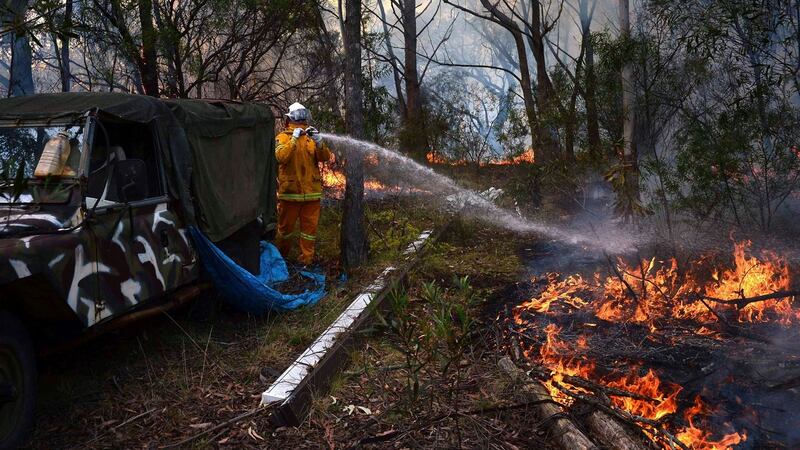Australia’s most populous state declared an emergency as wildfires tore through bushland west of Sydney, destroying hundreds of homes and threatening mountain townships.
New South Wales state premier Barry O'Farrell signed the order late yesterday, giving emergency services personnel the power to forcibly evacuate people, tear down threatened buildings and cut off power and gas supplies.
More than 2,000 firefighters are battling 58 blazes across the state, including 14 that are uncontained, rural fire service commissioner Shane Fitzsimmons told reporters today.

The nation’s bushfire season has started early after the warmest September on record, and the emergency measures reflect receding chances of rain to douse flames engulfing the Blue Mountains region 80km west of Sydney.
“This is still a very volatile, very long, uncontained fire edge,” Mr Fitzsimmons said. Conditions will be at their worst on October 23rd and two of the three main fires in the Blue Mountains have the potential to merge, he said.
The fires have destroyed 208 properties and damaged 122 others, the fire service said. About 855 claims have been received totaling AU$93 million, according to the Insurance Council of Australia.
Prime minister Tony Abbott, a regular volunteer with his local rural fire service brigade, did a 14-hour night shift at the weekend in the Blue Mountains to help with backburning, his office said.
A haze from the fires shrouded Sydney’s skyline for part of the day as smoke blew in from the mountains. The state’s environment department warned that
Sydney faced poor air quality today that could affect people with heart and lung disease.
Wildfires are a regular feature of Australia’s warmer months. In February 2009, bushfires across Victoria state killed 173 people and destroyed 150 homes in the worst blazes in Australian history.
A 63-year-old man died protecting his home from a fire at Lake Munmorah on the New South Wales Central Coast, about 110km north of Sydney on October 17th, police said in a statement.
Bloomberg










